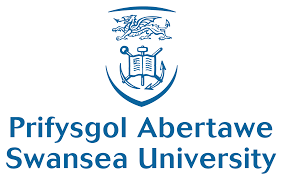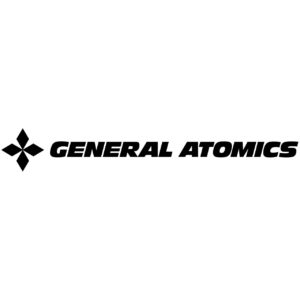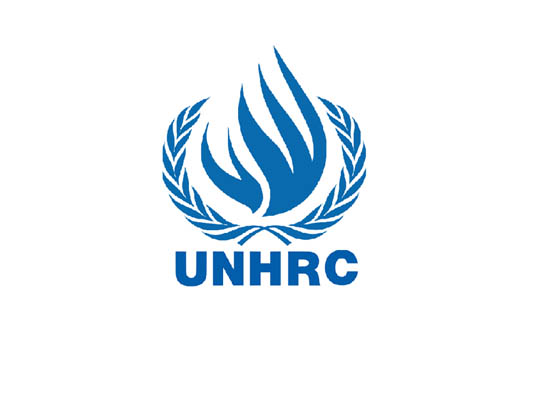If we can harness the power of nuclear fusion, it will solve a lot of the world’s energy problems. The Sun runs on nuclear fusion but in order to create fusion on Earth, it is necessary to create even higher temperatures and pressures than those in the center of the Sun. One of the critical problems that has to be dealt with is engineering components that can hold up to these extreme conditions.
Researchers from Swansea University and Culham Centre for Fusion Energy in the U.K., ITER in France, and the Max-Planck Institute of Plasma Physics in Germany have combined images from x-ray and neutron imaging systems to reveal the robustness of parts for use in fusion reactor research. Their work indicates that each type of imaging captures different aspects of a component and that combining the images yields more information that could be gained from just one type of imaging system.
One of the main approaches to nuclear fusion is called magnetic confinement. In this type of fusion reactor, extremely powerful magnetic fields are used to compress and heat a plasma. Some reactors use external superconducting magnets to create the field while other approaches induce currents into the plasma itself to heat and compress it. Temperatures as high as one hundred and fifty million degrees Celsius are required to initiate fusion. Researchers must be able to analyze the integrity of a component without destroying it in the process.
The international research team from the different institutions decided to focus their efforts on one particular critical component. This is a pipe carrying coolant that is called a monoblock. A tungsten monoblock was imaged with an X-ray system. It was then imaged by the ISIS Neutron and Muon Source’s neutron imaging instrument, IMAT.
Dr. Triestino Minniti is with the Science and Technology Facilities Council. He said, “Each technique had its own benefits and drawbacks. The advantage of neutron imaging over x-ray imaging is that neutrons are significantly more penetrating through tungsten.”
“Thus, it is feasible to image samples containing larger volumes of tungsten. Neutron tomography also allows us to investigate the full monoblock non-destructively, removing the need to produce ‘region of interest’ samples.”
Dr. Llion Evans works at the Swansea University College of Engineering. He said, “This work is a proof of concept that both these tomography methods can produce valuable data. In future these complementary techniques can be used either for the research and development cycle of fusion component design or in quality assurance of manufacturing.”
The next step in the research program will be to convert the 3D images produced with the two imaging systems into engineering simulations which will have micro-scale resolution. This is a technique which is called the image-based finite element method (BFEM). It allows the direct analysis of the performance of each individual component. Minor deviations from design caused by the manufacturing processes can be accounted for by this method.
The work on dual imaging by this research group will be a welcome addition to the toolkit of organizations working on nuclear fusion research.
Blog
-

Nuclear Fusion 57 – European Researchers Apply Dual Imaging Method To Components For Fusion Reactors
-

Geiger Readings for Feb 28, 2019
Ambient office = 100 nanosieverts per hour
Ambient outside = 115 nanosieverts per hour
Soil exposed to rain water = 115 nanosieverts per hour
Anaheim pepper from Central Market = 66 nanosieverts per hour
Tap water = 66 nanosieverts per hour
Filter water = 52 nanosieverts per hour
-

Nuclear Fusion 56 – CTFusion In Seattle, Washington Is Working On A DoE Grant To Create A Commercial Fusion Reactor
CTFusion is a startup company in Seattle, Washington that was created in 2015 to commercialize fusion research at the University of Washington. It builds on almost thirty years of research and development at the U of W Helicity Injected Torus – Steady Inductive laboratory funded by U.S. government agencies such as the Department of Energy (DoE), The National Science Foundation (NSF) and Advanced Research Projects Agency in Energy (ARPA-E). It was just awarded a three-million dollar grant from the U.S. DoE ARPA-E for the development of a commercial nuclear fusion reactor. It is hoped that a CTFusion will be able to create a commercial fusion reactor by 2030.
CTFusion is using a compact donut shaped toroid fusion reactor design called a spheromak. The plasma is composed of deuterium and tritium (DT). Powerful magnetic fields are used to compress and heat the plasma in the spheromak. CTF refers to this as their plasma current sustainment technology imposed-dynamo current drive.
DT fusion in the CTF spheromak requires temperatures over on hundred and fifty million degrees. This superhot plasma is not dangerous because the total mass of the plasma in the spheromak is less than one gram which is the mass of a dollar bill. Unlike a nuclear fusion reactor, there is no decay heat or hot fuel and little radioactivity in the fuel for the spheromak. There is no solid fuel in a core that could melt down in case of an accident.
Derek Sutherland is the CEO at CTFusion. He says “Assume that you have a cup of coffee on your desk you would like to maintain at 150° F. If left on its own, the coffee would begin to cool, and continue doing so until it reaches room temperature. The amount of time required for it to cool will depend on how quickly the heat leaks out of the cup into the ambient environment.”
“You can slow that down by using a thermos or cup holder, but the coffee will eventually cool to room temperature unless we supply energy to the system to keep its temperature at 150° F.”
“A solution for doing so, which also satisfies the everlasting need for caffeine during rainy days in Seattle, is to drink some of your coffee that has cooled slightly below 150° F, and then fill your cup back up with coffee that is 200° F. With a balance between energy input and output, the coffee temperature can be held nearly constant indefinitely.”
The spheromak must balance the heat lost with the heat generated by driving electrical currents through the plasma in order to maintain the necessary operating temperature. This is one type of magnetic confinement in which powerful magnetic fields are used to confine the plasma. Other magnetic confinement systems include the tokamak in which external superconducting electromagnets are used to compress and heat plasma, the stellarator which twists magnetic fields to reduce turbulence and the reverse field pinch which varies the intensity of the magnetic fields as a function of distance from the center of the toroid.
CTFusion is a member of the American Fusion Project which is run by the American Security Project and it is one of sixteen members of the Fusion Industry Association (FIA). Andrew Holland is the Executive Director of the FIA. He said, “It is heartening to see that ARPA-E continues to support and encourage the good work of the fusion community. It’s an exciting time in the private fusion community, with over $1 billion in direct investment. We’re looking forward to great things from CTFusion.” -

Geiger Readings for Feb 27, 2019
Ambient office = 112 nanosieverts per hour
Ambient outside = 151 nanosieverts per hour
Soil exposed to rain water = 151 nanosieverts per hour
Yellow bell pepper from Central Market = 114 nanosieverts per hour
Tap water = 83 nanosieverts per hour
Filter water = 77 nanosieverts per hour
-

Nuclear Fusion 55 – DIII-D National Fusion Facility Develops New Technique o Cool Magnetically Confined Plasma
Sometimes commercial nuclear fusion seems like the end of the rainbow. It was always “forty years” away no matter how much time passed. Today at least six companies in the U.S. alone are working on practical nuclear fusions systems and some say they are only ten years away from commercial reactors.
One of the most popular approaches for nuclear fusion is to compress and heat a plasma to the point where the atoms fuse and release energy. This approach is very challenging and there are a lot of variables that have to be manipulated to keep the plasma safely confined. If the plasma escapes the control of the magnetic confinement, it can quench the fusion reaction and even damage the containment vessel if it is not brought back under control quickly.
Heat from escaping plasma can melt the walls of the containment vessel, large erratic electrical currents can result in physical forces that can cause damage, and runaway high energy electron beams can cause serious localized damage. One way to prevent such damage is to inject material into the plasma that causes the plasma energy to uniformly radiate away. The problem with this approach is that it is difficult to get the injected material to the center of the plasma before some disruption occurs. If the researchers can get the injected materials into the center of the plasma, then the plasma can be cooled and disruptions can be stopped.
The DIII-D National Fusion Facility (DNFF) is part of a national effort to generate magnetically confined nuclear fusion. The facility is located in San Diego and is operated by General Atomics for the U.S. Department of Energy. The DIII-D is a research tokamak that has been operated at the facility since the late 1980s.
Researchers at the DNFF have just demonstrated a new technique to cool magnetically confined plasma before disruptions occur. The first step is the creation of a pellet of boron powder enclosed in a thin diamond shell. Then the pellet is sent into the center of the confined plasma at a speed of four hundred and fifty miles per hour. This gets the pellet deep into the plasma where the diamond shell disintegrates and releases the boron dust where it will have the maximum desired effect.
This new technique could have a profound effect on regulating confined plasmas for the generation of nuclear fusion. It can potentially solve three major problems with confined plasmas. First, it efficiently, quickly and safely radiates away excess heat in the plasma. Second, it reduces the forces exerted by the plasma on the physical containment vessel. And, third, it prevents the formation of energetic electron beams.
Richard Buttery is the Science Director for the DNFF. He said, “Shell pellets offer the potential of dealing with all three facets of the challenge, eliminating risk of device harm.” So far, the technique has only been demonstrated on a small research tokamak. In the future, the team will work on improving the design of the diamond shell that carries the boron dust so that it can be used to cool reactor-class plasmas in bigger tokamaks. -
Nuclear News Roundup Feb 26, 2019
CEF concerned that Ohio’s political leaders want tax payers to finance nuclear plants. Vindy.com
Wind & Solar In China Generating 2× Nuclear Today, Will Be 4× By 2030 cleantechnica.com
A giant offshore wind project has reignited debate over whether the intermittent renewable energy technology could one day replace nuclear power. Greentechmedia.com
-

Geiger Readings for Feb 26, 2019
Ambient office = 62 nanosieverts per hour
Ambient outside = 84 nanosieverts per hour
Soil exposed to rain water = 87 nanosieverts per hour
Avocado from Central Market = 71 nanosieverts per hour
Tap water = 121 nanosieverts per hour
Filter water = 116 nanosieverts per hour
-

Radioacrtive Waste 383 – U.N. Report Charges That Israel Is Burying Radioactive Waste In The Golan Heights
The United Nations has charged that Israel has been burying radioactive nuclear waste in the occupied Golan Heights. Antonio Guterres is the U.N. Secretary General. He recently submitted a report for the U.N. Human Rights Council’s Fortieth Session which will begin in Geneva next week. He said in the report, “The Syrian Arab Republic noted that Israel continued to bury nuclear waste with radioactive content in 20 different areas populated by Syrian citizens of the occupied Syrian Golan, particularly in the vicinity of Al-Sheikh Mountain [Mt.Hermon]. The practice has put the lives and health of Syrians in the occupied Syrian Golan in jeopardy and constituted a serious violation of the Fourth Geneva Convention.” Syrian has been claiming for the last decade that Israel has been burying waste in the Heights.
Emmanuel Nahshon is a spokesman for the Israeli Foreign Ministry. He said that the charge from Syria was “utter nonsense.” He added that the claim was “another false report from the UNHRC which specializes in attacking Israel” and that many of its member states “are bloody dictatorships hiding behind attacks against Israel in order not to allow scrutiny of their own human rights records.”
The Heights were captured from Syria in the 1967 Six Day War between Israel and Arab nations. Israel formally annexed the Heights in 1981. The international community of nations has refused to recognize Israel’s right to the Heights. The U.N. has regularly demanded that Israel return the Heights to Syria.
The new U.N report also says that Israel is “providing logistical support to terrorist groups,” operating in the Heights such as the Nusrah Front. It charges that Israel is supplying “those groups with weapons, ammunition, money and medical care to frighten the local population and to maintain a no-go zone along the ceasefire lines.” Israel says that such claims are not true.
The report claims that “the decision of Israel to impose its laws, jurisdiction and administration on the occupied Syrian Golan was null and void and without international legal effect” and “demanded that Israel rescind forthwith its decision.”
The office of the U.N. Secretary General says that it wrote the report at the request of the UNHRC and that it had only used information supplied by members of the U.N. There was no attempt to independently verify the contents of the report.
The U.N. report on the Heights will be debated as Agenda Item 7 at the annual UNHRC conference in the middle of March along with six other topics. Agenda Item 7 mandates that that the UNHRC must debate alleged Israeli human rights violation at every UNHRC session. Any charges of human rights violations made against any other country are debated under Agenda Item 4.
As usual, the UNHRC will hear more reports against actions taken by the Israeli government than any other country at the annual conference. The UNHRC also said that at this session, it will publish a controversial database of companies that are doing business with companies in areas of Israel that are beyond the pre-1967 borders. Israel has prevented the publication of this database before.
